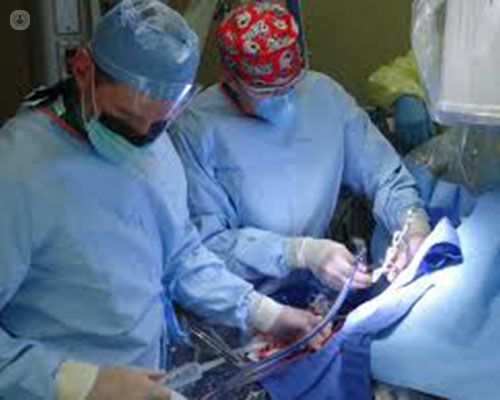


Type 2 diabetes is a condition where a person has a high blood sugar level, and is often associated with obesity, and is more common as people get older. There are a number of surgical options that can be used to lose weight that have a direct effect on how the body uses insulin, and improves blood sugar levels, making the diabetes much more manageable.

Types of diabetes surgery
There are a number of surgical options which can help you to manage your diabetes. These surgical options were originally only used as a solution to excessive obesity, as they cause weight loss in the patient. More recent studies have found that this surgery, known as bariatric surgery, has not only led to a loss of weight, but also that insulin and blood sugar levels become more normalised following surgery.
The types of bariatric surgery available that have been shown to improve blood sugar levels are:
Gastric bypass
- A procedure where the stomach is made smaller, and food bypasses parts of the small intestine, giving the patient the sensation of feeling full quicker.
Gastric band
- Surgery where an adjustable band is placed around the top of the stomach, creating a pouch which holds less food and causes the patient to feel fuller quicker. The less food held in the stomach, the easier it is to lose weight.
Gastric sleeve
- A large section of the stomach is effectively stapled closed, which causes the stomach to reduce in size, again causing the patient to feel fuller quicker, and therefore reduce their intake of food.
Biliopancreatic diversion
- This is a two-step procedure where a pouch a quarter of the size of the stomach is initially created using staples, as with the gastric sleeve, the remaining part of the stomach is then removed. The small intestine will then be joined to the end of the pouch, closer to the large intestine than before. This then causes food absorption to be greatly reduced, and weight loss becoming easier following the procedure.
Benefits of diabetes surgery
Surgery is not fully recognised as a standard option for the treatment of diabetes, however it is increasingly being chosen as the most suitable option, especially in patients where changes to lifestyle and diet, alongside diabetes medication hasn’t sufficiently controlled diabetes and blood sugar levels.
The benefits of this type of surgery are that positive results are almost guaranteed, and much more instantaneous than with lifestyle and diet management, with medication. Once the weight has initially been lost in the patient, it becomes much easier to manage the weight afterwards, and therefore the blood sugar levels become more manageable.
Risks of diabetes surgery
The surgery carries the usual risk of complications that any form of surgery carry, namely risk of infection, but the surgery is commonly performed and is a standard procedure. Outside of the surgical procedure, there are risks of nutritional deficiencies as a result of the stomach not having the capacity to take in as many nutrients. These can be managed with nutritional supplementation.
If you would like to discuss diabetes surgery with a specialist, you can make an appointment here.